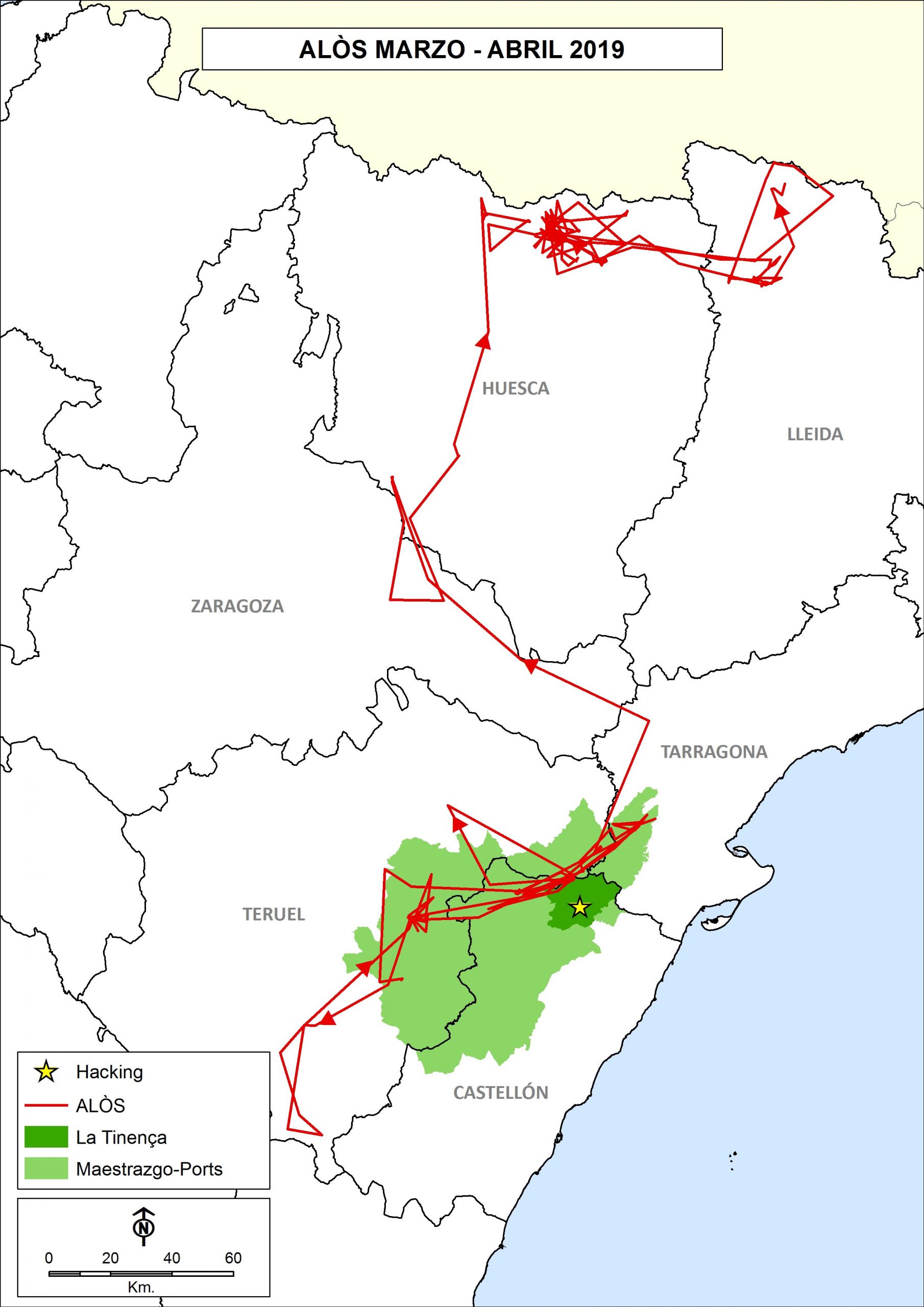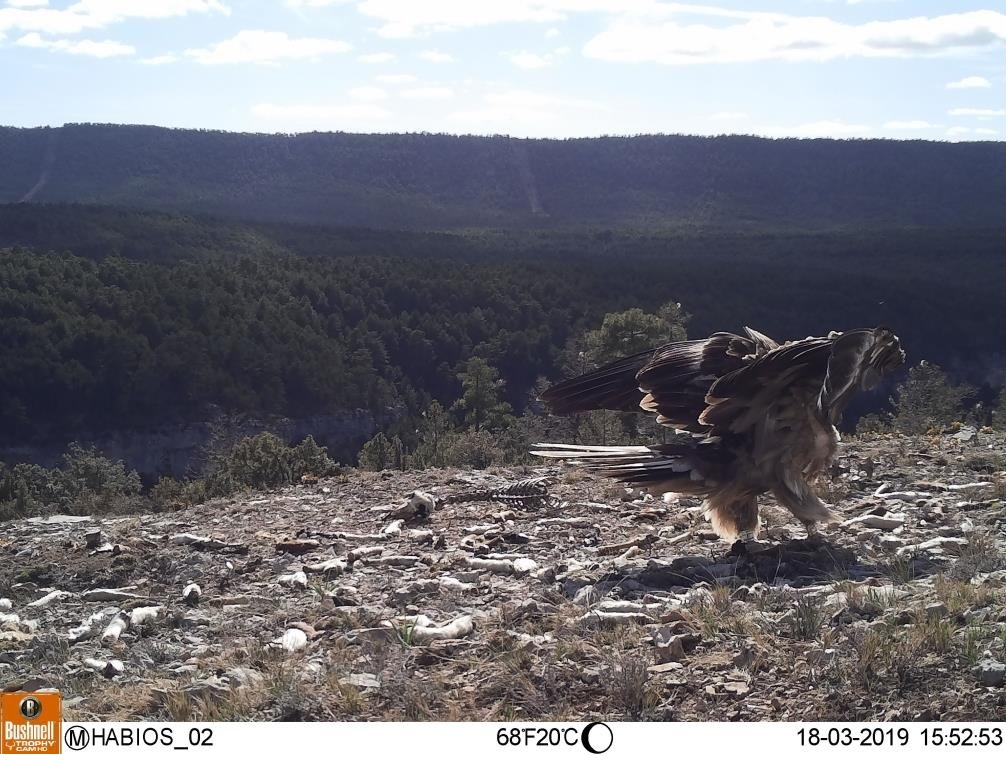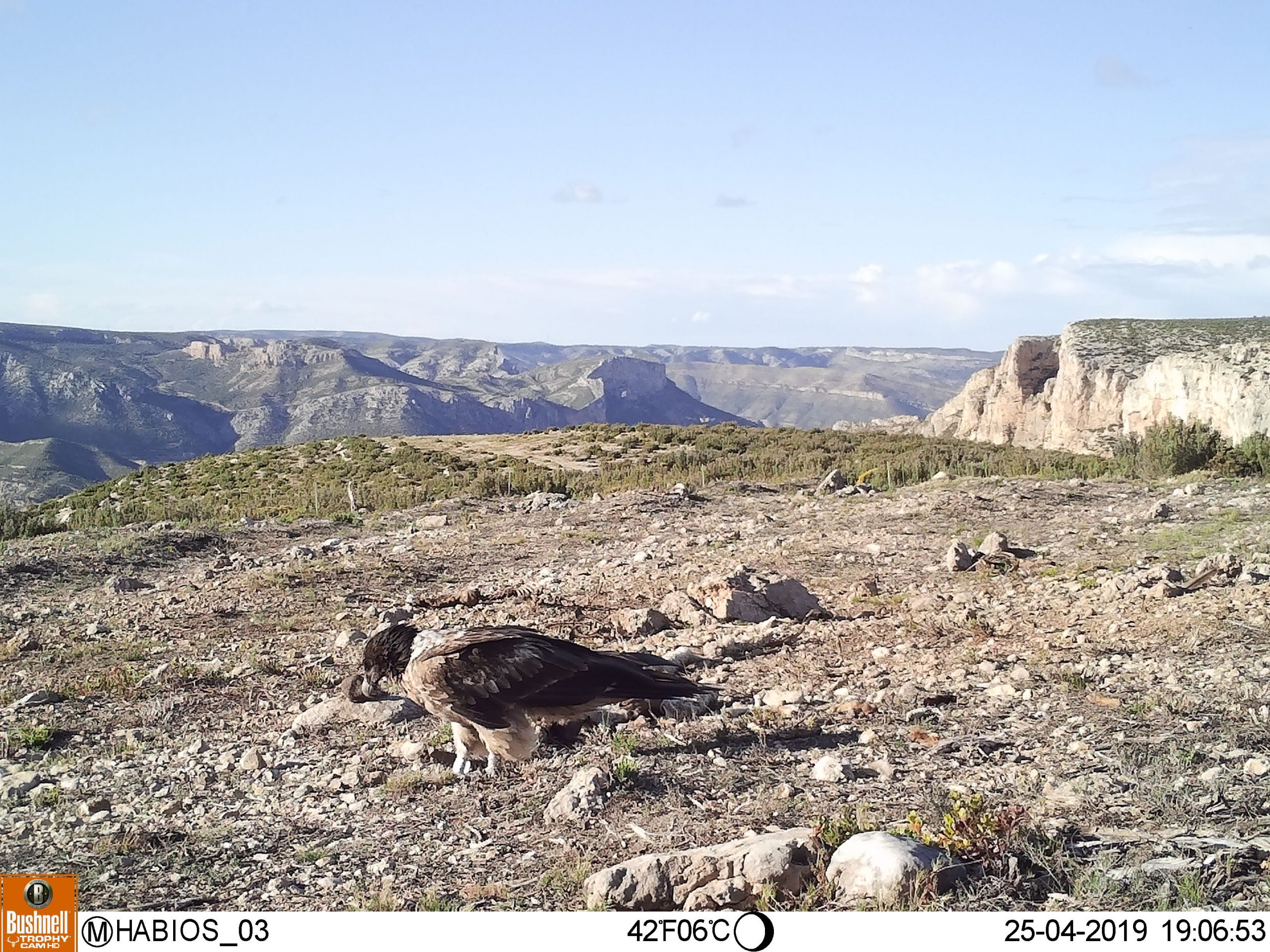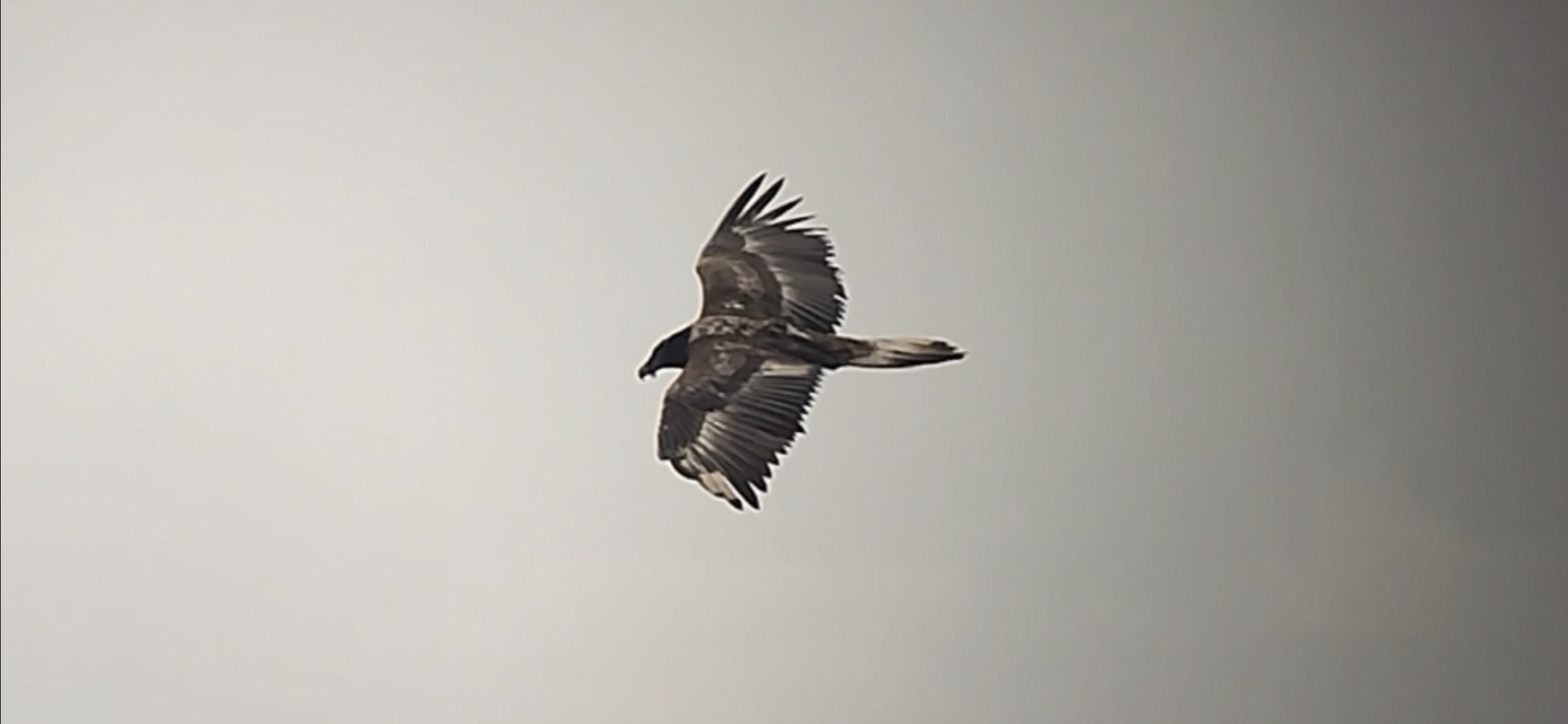
The reintroduction of Bearded Vultures in the Maestrazgo region of Spain began in 2018 with the release of two young birds, Alos and Amic, and over the last 12 months we have followed their adventures closely.
After France and Andalucia the next stop on the 2019 Bearded Vulture release season takes us back to the Parque Natural de la Tinença de Benifassà where on Thursday 6 June two more Bearded Vulture chicks will be released into the wild.
The two young birds from the specialised breeding centres Vallcalent in Catalonia and Guadalentín in Andalucía will be formally presented in a public ceremony by Elena Cebrían Calvo, the Minister for Agriculture, Environment, Climatic Change and Rural Development of the Autonomous Community from Valencia, before being released into the wild.
Latest news from the Maestrazgo Bearded Vulture project

As well as the news of the release the latest edition of the project’s newsletter has been released. During a review of the camera trap footage set at a supplementary feeding station in the Parque Natural de la Tinença de Benifassà the team spotted an adult female, Formiga, born in Santa Cilia de Panzano Aragon, at one of the feeding stations.
Alòs and Amic
The two birds released in 2018 are continuing their progress into adult life well exploring the region.
Of the two birds Alòs is still the most adventurous and in March and April made a trip north to the Pyrenees. During that trip they were spotted at a feeding station at Muela Mujer Villarluengo (Teruel).
Alòs was also spotted at a site at L’Alfara de Carles (Tarragona) which they frequent quite regularly called the “Rases de Maraco” where they have been seen using the rocky outcrop to break bones.
Map of the travels of Bearded Vulture Alòs in March and April and Alòs caught on the camera trap visiting the feeding station at Muela Mujer Villarluengo (Teruel).
Amic has tended to stay close to the hacking site and the release area, not traveling great distances.
Esera and Otal

Of the two adult birds translocated from the Pyrenees in December 2018 only Otal remains in the Parque Natural de la Tinença de Benifassà, Esera quickly returned to the Pyrenees after their release last year and has been there ever since.
Connecting populations of Bearded Vultures in Spain

The Maestrazgo region of Spain was historically a breeding site for Bearded Vultures and while there are no resident population the area is regularly visited by individuals released in Andalusia. The project to reintroduce the species to the region began in 2018 with the aim of establishing a wild breeding population that will bridge the populations in the Pyrenees and Andalusia, similar to the LIFE GYPCONNECT project in France that connects populations in the Pyrenees and the Alps. Over the course of the project captive-bred birds wil be released in specially constructed hacking sites in the Parque Natural de la Tinença de Benifassà and in a unique experiment the team, in close consultation and collaboration with us here at the Vulture Conservation Foundation, will translocate adult non-breeding or floater birds from the population in the Pyrenees to the Maestrazgo region to test how effective this method is and if that has an effect on the reproductive productivity of the Pyrenean population. As part of the project the released birds will be monitored by fitting them with GPS transmitters to better understand how the move around the region and to encourage movements of birds to the region a series of supplemetary feeding stations will be created.
The project is led by the Generalitat of Valencia, in collaboration with the Autonomous Communities from Aragón and Catalonia, the Spanish Ministry of Agriculture, Fish, Food and Environment and the us here at the Vulture Conservation Foundation.
May 2019 update ![]() Newsletter no. 8 May 2019 Gaseta del Crebalòs N8_maig 2019.pdf Adobe Acrobat Document 4.2 MB Download
Newsletter no. 8 May 2019 Gaseta del Crebalòs N8_maig 2019.pdf Adobe Acrobat Document 4.2 MB Download









